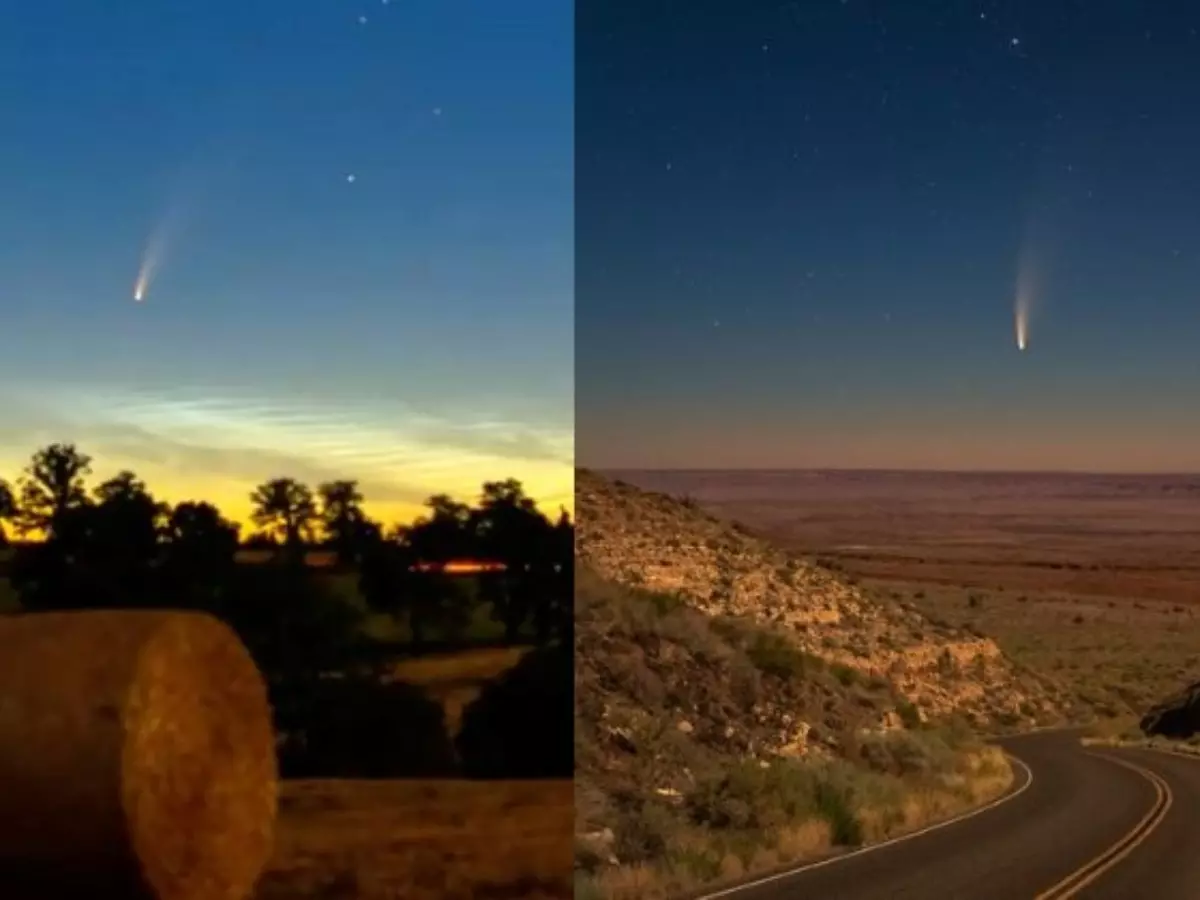Comet Neowise Won't Return For Another 7,000 Years But It Will Be Visible Throughtout July. Details Here
Newly discovered Comet Neowise that won't return for another 7,000 years is now visible in the July sky in the Northern Hemisphere.

A newly discovered comet, Comet Neowise is streaking past Earth, providing a stunning nighttime show to many sky gazers these days.
Comet Neowise is the brightest comet visible in the Northern Hemisphere in a quarter-century.
 Reuters
Reuters
It was swept into Mercury's orbit a week ago. According to AP, its close proximity to the sun caused dust and gas to burn off its surface and create an even bigger debris tail. Now the comet is headed towards the earth and it will be the closest to us in another two weeks.
The comet will be visible across the Northern Hemisphere until mid-August. People have already spotted the Comet with their naked eyes.
Comet NEOWISE shining bright this morning in Huron County, Ontario. Visible to the naked eye! Definitely one worth waking up at 3:30 am for. @c2020f3 pic.twitter.com/DO5s9ZyWEn
¡ª Jason O'Young (@jasonoyoung) July 6, 2020
I have a strong dislike of early mornings¡ªbut so worth it today because wow is that comet beautiful! C/2020 F3 (NEOWISE) I was at Sunset Crater by 4AM. It was an easy naked-eye object, but really rewarding through binoculars. Last pic is closest to naked eye scale.#neowise pic.twitter.com/1I0Cx2fZQJ
¡ª Jeremy Perez (@jperez1690) July 5, 2020
No nearby clouds this morning & wound up with the view I was after with Merriam Crater. On any given day that old cinder cone is perfect¡ªthen catching it sharing the horizon with this graceful comet gets kind of goosebumpy for me. (Details in next post) #neowise #cometneowise pic.twitter.com/qIVYCFcoMk
¡ª Jeremy Perez (@jperez1690) July 7, 2020
With little or no light pollution Neowise is visible in the dark skies to naked eyes but to see the long tail of the comet, one would need binoculars, according to NASA.
According to scientists the comet is about five kilometres. Its nucleus is covered with sooty material dating back to the origin of our solar system 4.6 billion years ago.
It will be another 7,000 years before the comet returns, "so I wouldn't suggest waiting for the next pass," AP quoted telescope's deputy principal investigator Joe Masiero of NASA's Jet Propulsion Laboratory in Pasadena, California as saying.
Astronauts aboard the International Space Station already caught a glimpse of the comet a few days back.
"When you wish upon a falling star..." Comet Neowise was pictured from the station on July 5 as it orbited above the Mediterranean Sea. https://t.co/KqCk1xlCUG pic.twitter.com/vR6MNvwuh1
¡ª Intl. Space Station (@Space_Station) July 7, 2020
Last night's fireworks, for real. Because Science. #NEOWISE #comet pic.twitter.com/IKcJ1wLFAl
¡ª Bob Behnken (@AstroBehnken) July 5, 2020
Earth Sky claims that the comet is visible at dawn now and by mid-July, the comet is expected to become more visible at dusk in the northwest horizon. With every passing day the comet will become clearer and easier to glance at and will be the closest to Earth between July 22 and July 23. Having a pair of binoculars handy would surely help you. People in the Northern hemisphere including in India will be able to see it with naked eyes or using binoculars after sunset.
Also Read: After 18 Years, Comet With 1 Billion Km Tail Found, Seven Times The Earth-Sun Distance
 Jeremy Parez
Jeremy Parez
Dark Sky has an easy trick on how you can spot the comet. According to the website, ¡®To see the comet, go outside early in the morning, about an hour before sunlight appears on the horizon, and face toward the northeast. Hold your fist out at arm¡¯s length. Align the lower part of your fist with the horizon. The comet will be visible about halfway between the horizon and the top of your fist¡¯.
This is a really a once in a lifetime opportunity so don¡¯t miss it!
Also Read: A New Comet Has Been Discovered By NASA